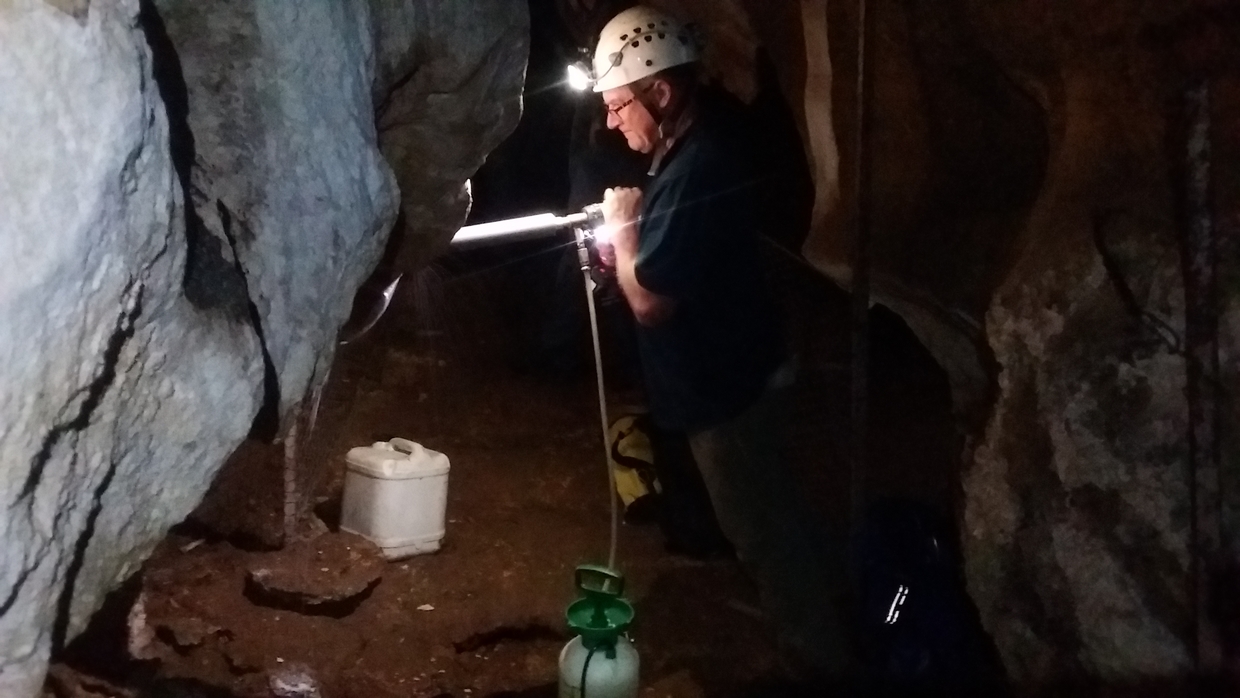The findings result from speleothems - stalagmites, stalactites, and flowstones - in the Buchan Caves.
Using classic uranium–lead dating, scientists found that the East Victorian Highlands had grown nearly 800 feet in the last 3.5 million years. Much of the Highlands rose up about 90 million years ago when the Tasman Sea between Australia and New Zealand opened up.

Scientist Jon Woodhead uses a custom made machine with a diamond-tipped drill to carefully extract speleothem ‘rubble’ for analysing. IMAGE: John Engel
That's a win for geochronology and using speleothems as environmental and geological archives.
"The Australian and Pacific plates share a common boundary and many of the forces involved at this boundary may be propagated into the Australian plate as tectonic stress. Some of this tectonically-induced stress is then released as uplift of the mountains in South East Australia," says University of Melbourne geologist John Engel. "This is why East Gippsland may still feel effects related to these tectonic forces. This subtle modification of classical plate tectonic theory can help explain the frequent, small earthquakes observed along South East Australia."






Comments